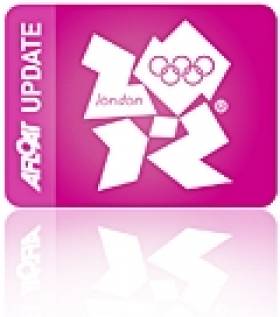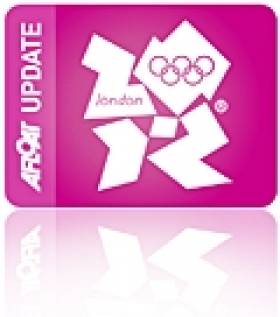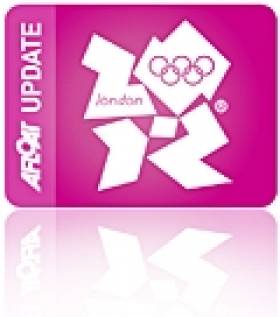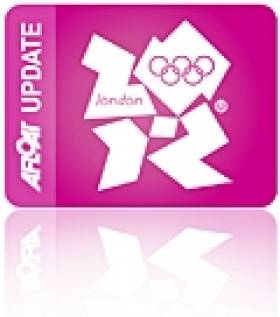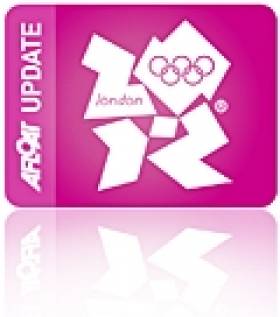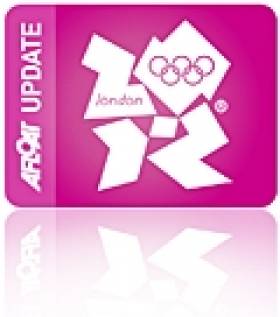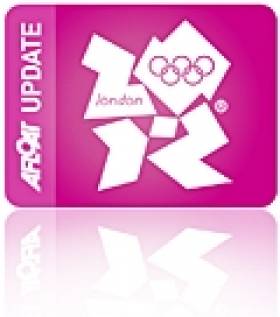Displaying items by tag: david burrows
Lyons Hopes For a Special Cork Week in 2012
#CORK WEEK - Pat Lyons of Royal Cork Yacht Club has spoken to website The Cork News about the city's hopes for the 2012 Cork Week regatta.
Crosshaven in Cork Harbour will host the club's biggest regatta - which takes place every two years - from 7-13 July this summer.
“Sailing in Ireland and Cork is in great shape,” says Lyons, who is expecting more than 250 boats to pack the harbour for racing and more.
The event is also perfectly timed just two weeks ahead of the 2012 Olympic Games in London, where Royal Cork Yacht Clubman Peter O’Leary will vie for gold with Dublin yachtsman David Burrows in their two-man keelboat.
Though the economic downturn has had a serious effect, costs have been cut across the board and some rules have been relaxed to allow for the widest possible level of participation.
“There are three factors that make Cork special," says Lyons. "Firstly, there is the number of boats and the various fleets. Secondly, there are 10 races planned. While that doesn’t always pan out due to the weather, we have pretty settled weather conditions and an excellent coastline in Cork, with hills running down to the sea.
"And finally, there is the harbour, which, if the weather impacts, provides excellent shelter. We’ve always been able to achieve a higher level of competition than a lot of other regattas, with at least one or two races per day.”
As previously reported on Afloat.ie, preparations for the event have already kicked off with the launch of a dedicated new website.
The Cork News has more on the story HERE.
Third Place in Race Four Keeps O'Leary/Burrows in Top Ten
#PERTH2011–Peter O'Leary and David Burrows are back in the top ten of the ISAF Star World Championships in Perth today after briefly dropping to 13th from fifth overall, the result of a poor third race where they scored 33rd in their 42-boat fleet. They scored an excellent third place though in the second race of the day to put the sole Irish pair ninth overall on 46 points, the same tally as Portugal's Afonso Domingos and Frederico Melo in eighth.
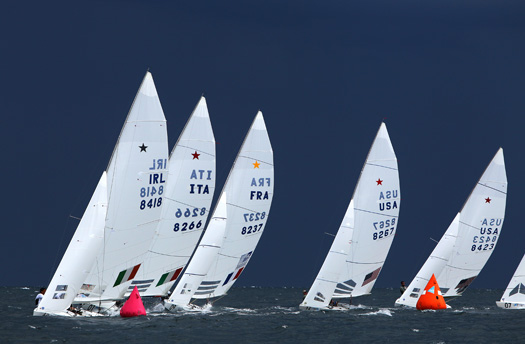
Leading the world - the Irish Star rounds the top mark first. Photo: Richard Langdon
Writing on their facebook page the Irish crew said: '
Another outstanding performance from the British Olympic Champions Iain Percy and Andrew Simpson consolidated their first place position in the overall standings after race four in the Star fleet.
Percy and Simpson have a total of 16 points while Mark Mendelblatt and Brian Fatih (USA) are on 28 points, with Germany's Robert Stanjek and Frithjof Kleen just behind them on 30.
"We had a good day today. We weren't going very well but we hung in and fought hard," Percy said. "My body is a bit bruised and battered for it but it's okay".
In race three, Norwegian team Eivind Melleby and Petter Morland Pedersen took first followed closely by Aimilios Papathanasiou and Antonios Tsotras of Greece.
The fight for third was close with Aimilios Papathanasiou and Antonios Tsotras of Greece just making it, putting Germany's Johannes Babendererde and Timo Jacobs in fourth place.
The outcome of race four saw the Swedish pair Fredrik Loof and Max Salminen take first place followed by Brazil's Robert Scheidt and Bruno Prada.
Third went to O'Leary and Burrows while British pair Percy and Simpson were fourth.
With six more races until the medal race the British are aware of the obstacles to come.
"There is still a long way to go, we're not super quick, so not confident we will get too far but we will keep battling to the end," he said.
Star racing is scheduled to continue on Tuesday on the Leighton course from 1300 Perth time.
O'Leary and Burrows Straight into Third Place
#PERTH2011 – Ireland's Peter O'Leary and David Burrows have sailed straight to the top of the Star keelboat leaderboard after the first day's racing of the ISAF world Championships today. The Cork-Dublin pairing are third overall having counted an 8 and 2 in the 42 boat fleet and just three points off leaders, the current Olympic Gold Medallists Iain Percy and Andrew Simpson from Great Britain.
The Irish Stsr boat is out of the water this evening having damage repaired after a second race collision, O'Leary and Burrows are working on the basis that all should be good by tomorrow for the important third race of the series.
Latest results here
O'Leary and Burrows Go Downwind with the 'Doctor' (Video)
#OLYMPIC SAILING–All set for next week's Olympic qualification sailing regatta Irish campaigners Peter O'Leary and David Burrows look in fine form out training in the 'Fremantle doctor'. The consistent wind that blows during Perth's summer time from the southwest proved no object to the pair even when it got up to 28–knots during their downwind session.
The Star (that ceases to be an Olympic class after next year's Olympic regatta) does not use a spinnaker when sailing downwind. Instead, when running downwind a whisker pole is used to hold the jib out to windward for correct wind flow.
Listening to comments from coach Marc Pickel boat you can hear how technical things have become in Olympic keelboat set-up even when sailing in mast breaking weather! O'Leary and Burrows are advised there is 'too much inversion at the spreaders and the solution is to use more mast puller and more top backstay! Maybe not an easy task when you're surfing along in a 700kg keelboat!
O'Leary and Burrow's first race is Sunday week, December 11th so there's a few more days of windy training to come.
Irish Olympic Crews Seeking Qualification in Perth
#OLYMPIC–Ireland takes its place among the world's sailing nations in Perth, Western Australia this weekend for the start of a two-week long sailing championships that is a do or die regatta for Ireland's Olympic squad intent on competing at the London Olympic regatta next July.
There are high hopes that at least two crews will qualify at the ISAF world championships where over 75% of qualification slots are available. Irish officials say Peter O'Leary and David Burrows in the Star keelboat along with Annalise Murphy in the Laser Radial are not only front runners for qualification next week but also Olympic medal prospects.
There is no question both are consistent top 10 performers at world level. There is no question either of their heavy weather performances and as Perth is famous for its strong winds team insiders say a world class result for Ireland is possible.
Murphy won bronze at the Sail for Gold (a dry run of the Olympic regatta) in August and O'Leary won gold (albeit with a different crew) at the same event in 2010.
In the 49er dinghy Ryan Seaton and Matt McGovern are also aiming for the London Games and qualification here is by no means ruled out for the Belfast Lough pair.
Other Irish boats competing in Perth for the London ticket are two times Olympian Ger Owens from Dun Laoghaire now sailing with Howth's Scott Flanigan in the 470 dinghy James Espey will compete in the Laser, while Ross Hamilton will sail in the Finn
First into action on Monday morning will be Hamilton in the Finn. Murphy also has her first race in a 100-strong Laser Radial fleet.
Top international sailors put on a show of strength in Perth's Forrest Place on Friday to help launch the Perth 2011 ISAF Sailing World Championships.
Several thousand people in the CBD watched as the athletes paraded from Barrack Street jetty to the heart of Perth, where they were warmly welcomed by a team of hosts, including Western Australian Premier Colin Barnett.
The athletes had sailed upriver on Rottnest Island ferries from Fremantle, passing under bridges lined with well-wishers, and paraded through the city past a crowd of cheering locals, all braving the 33C heat.
While the Japanese and Korean teams posed for a combined photograph, the New Zealand men squeezed in some rugby practice in the backdrop.
Onlookers lined the streets as the athletes walked behind their national flags, occasionally cheering and posing for photographs.
They were led by a Royal Australian Navy band — described by the Chief Petty Officer Gabe Kicsak as a "rock band on steroids".
Irish flag bearer Scott Flanagan twisted the flag in his hands as he joked that the Perth heat was nothing compared to Ireland's "tropical climate".
Also in the procession was Hungarian windsurfer Aron Gadorvalvi, who could be seen getting a workout with his toddler daughter's pushchair.
Drifting in and out of the procession during the march were Denmark's athletes stocking up on ice-cream.
Among those in the crowd were Trinity Sale (9) and brother Mitchell (6) cheering on their dad, Australian 49er crewman Marty Sale, who will compete with his skipper Duncan Head.
Trinity, who attends Perth's Rawlinson Primary School, said: "I liked it a lot, especially as my dad was marching."
Forrest Place was awash with colour, flags and cameras small and large as the athletes made their entry.
"The Fremantle Doctor is calling — may you all achieve your dreams," ISAF President Goran Petersson said, referring to the world championships and Olympic selection at stake.
The ceremonial part of the event was opened by three Aboriginal dancers, with Dr Richard Walley on the didgeridoo and performing the traditional Welcome to Country.
The Australian anthem was sung by talented Perth busker, Fiona Mariah, a former contestant on a national television talent show.
Marching for the first time were six nations — Kyrgyzstan, St Lucia, Trinidad & Tobago, Cook Islands, Kazakhstan and Montenegro.
The athletes' oath was taken by three-time world champion Marcelien Bos-de-Koning (NED) and the officials' oath by jury chairman Bernard Bonneau.
Perth 2011 chairman Ian Campbell quoted Ernest Hemmingway in his welcome address — from a 1936 magazine article on why people go to sea. "The sea was the last wild place left."
He also quoted at length from a speech made by former USA President John F Kennedy after Australia's challenger Gretel took one race off the American defender Weatherley in the 1962 America's Cup at Newport, Rhode Island.
"It is an interesting biological fact that all of us have in our veins the exact same percentage of salt in our blood that exists in the ocean and therefore we have salt in our blood, in our sweat and in our tears.
"We are tied to the ocean and when we go back to the sea, whether it is to sail or to watch it, we are going back from whence we came."
Mr Campbell said: "I wish all the athletes lots of sweat, as little blood as possible, and tears of joy as you enjoy the magnificent conditions off Fremantle in the coming weeks."
India's coach Mohit Nautiyal said he was confident in his country's team.
"The Finn is definitely our strongest event," Nautiyal said.
"We are very hopeful for gold but [winning] is not very important. We are here because we enjoy sailing," China's team manager Ye Xiao said.
It was clear that most athletes admired the Perth surroundings.
Michael Hestbaek (DEN), a Star class competitor, said: "I originally came (to the opening ceremony) with the idea to have a sail up the river and see the beautiful and spectacular scenery."
"I'm sure there will be more to come," said the three-time world champion in Laser (2) and 49ers (1).
And on his hopes at Perth 2011: "I expect at least three teams to make the top 10 and hope some will medal. I'm hoping to be one of them."
Athletes then flooded the numerous Perth eateries for lunch before catching a train back to Fremantle.
Ireland is on the entry list in six classes for the Weymouth and Portland International Sailing Regatta 2011, the London 2012 Olympic Test Event, that has been finalised today.
Ireland's leading hopes for a top result is in the Radial class where Annalise Murphy took bronze at the Sail for Gold regatta at the same venue. There's also high chances in the Star class with Peter O'Leary and David Burrows. Also sailing for Ireland is James Espey is in the Laser, Ross Hamilton in the Finn, Ger Owens and Scott Flannigan in the 470, Ryan Seaton and Matt McGovern in the 49er. A full entry list is available for download at the end of this post.
Sixty six nations have submitted the names of the 460 sailors who will test the conditions at Weymouth and Portland one year ahead of the London 2012 Olympic Sailing Competition.
For many of Member National Authorities there has been a selection headache with nations following game time rules where only one athlete per event is allowed.
In the Finn class Great Britain's Ben Ainslie was selected ahead of Giles Scott and Ed Wright, Spain's Marina Alabau received the nod ahead of Blanca Manchon and Anna Tunnicliffe (USA) lost out to Sally Barkow (USA).
The Women's Match Racers open the Weymouth and Portland International Regatta on 2 August 2011 with the start of their Round Robins. The Men's and Women's RS:X begin on 4 August followed by the Laser, Laser Radial and Men's and Women's 470 on 5 August before the Finn, 49er and Star sailors begin their competition on 6 August.
The London 2012 Olympic Games Sailing Competition will take place at the Weymouth and Portland Sailing Academy and Portland Marina, located in Dorset on the South Coast of England. Racing is scheduled to take place from 29 July to 11 August.At the 2012 Games sailing will introduce women's match racing for the first time. The racing format will be a single round-robin, quarter finals, semi-finals and then the finals. The nine fleet racing events will all sail an opening series before the top ten in each event contest a double-points Medal Race to decide the final positions. The Medal Races have a target time of approximately 30 minutes and will take place close to the shore at the Nothe to allow spectators ashore to get close up to the action.
Irish Olympic Keelboat Trials Starts this Month
Act one, scene one of Irish sailing's bid for Olympic glory in London next years kicks off this month when rival helmsmen Max Treacy and Peter O'Leary square up for the right to represent Ireland next July at the Olympic Regatta in Weymouth.
The Irish Star keelboat Olympic trials gets underway on May 24th on the waters off Medemblik, Holland as part of the massive ISAF Delta Lloyd regatta.
O'Leary with new crew (and triple Olympian) David Burrows will go head to head with Treacy and Anthony Shanks in a 23-boat fleet that has attracted all the top teams, a mirror of next year's Olympic regatta itself.
The two Irish boats haven't met since last August when O'Leary sensationally won Britain's Sail for Gold Olympic test event at Weymouth and Treacy withdrew with boat problems.
Since then O'Leary and Burrows have been training in the USA scoring a significant second overall at the Bacardi Cup in February.
Treacy and Shanks have proved a formidable combination clocking up some impressive results over a decade or so in the Star class competing first for a place for Athens 2004, then Beijing and now London. It is understood the pair are hooking up next week with long time training partner (and British Olympic Gold medalist) Ian Percy for an intensive two week training session.
While the first of the nomination trials is to be held in Holland, the second is in July in Weymouth but it's worth remembering the first chance of nation qualification – where 75% of Olympic slots are up for grabs – is not until December in Perth, Australia.
The new procedures set out for Olympic qualification were announced by the Irish Sailing Association in January.
The memory of the selection debacle from four years ago is still very much in mind. Back in 2008 a decision to send O'Leary instead of Treacy was made by an ISA selection committee rather than on the water trials, a move that was unsuccessfully appealed by Treacy to the Olympic Council of Ireland (OCI). It was a divisive period for Olympic sailing in Ireland.
Confirmation this week that both teams are entered for the Delta Lloyd regatta in Holland and both boats are also entered for Perth indicates the stage is set for the next episode of Star wars.
The sailing season is starting and selecting the Afloat.ie/Irish Independent "Sailors of the Month" for March has been a swift business, with the remarkable performance by Peter O'Leary of Cork and David Burrows of Malahide in the Olympic Star Class's legendary annual Bacardi Cup series in Miami emerging as the clear winner.
Admittedly the Irish duo only managed the runner-up slot in Florida. But in a fleet of 93 boats rampaging around in wildly varying conditions, it was an achievement to be at the top of the frame at all. And they were beaten by only one point, even if it was lost in the final race, which they'd started leading overall by a point.
Because the Stars are under a death sentence in the Olympic scene, with next year's Olympiad their final appearance in the five ring circus, the class has acquired an extra slightly morbid interest. And the boat tuning and tweaking knowledge acquired during their long Olympic career will see the class's measurement and equipment rules pushed to the uttermost for this last hurrah.
In fact, some Star fans have become emotional and compared the showdown to a combination of the OK Corral, the Alamo, and Custer's Last Stand in light of the Star's American origins, while the more internationally and nautically minded have invoked memories of Trafalgar and Lepanto.
And all this for one of the oddest looking and most demanding boats on the planet. The Olympic glow does that to people. This time round, we happily glow ourselves, as the O'Leary-Burrows team (each has figured as Sailor of the Month before, but this is their first time together) and the combinations shows every promise of having what it takes.
Irish Olympic Crews in Top Twenty of World Rankings
Peter O'Leary who has been sailing with three different crews, David Burrows, Frithjof Kleen and Timothy Goodbody to date is ranked 17th by the International Sailing Federation (ISAF).
O'Leary and Burrows sailing in the Star keelboat class were recent top finishers at 93-boat fleet in Miami. They finished second overall after they lost the overall lead in the last race of the 2011 Bacardi Cup.
Listen into a podcast about Peter O'Leary's Olympic sailing plans HERE.
Fellow Olympic squad member, 21-year old Annalise Murphy from Dun Laoghaire is now ranked 12th in the Laser radial class counting seven ISAF events. Murphy has also had success in Florida this season, she finished fourth in the Miami Olympic Classes regatta in January.
Listen to what Team Manager James O'Callaghan has to say about her progress:
The next release of the ISAF World Sailing Rankings will be on 13 April 2011 and will include the Trofeo SAR Princess Sofia Mapfre in Spain.
The ISAF World Sailing Rankings rate skippers based on their performances over the last two years. Skippers score points by competing in ISAF Graded events. The top finishers at all ISAF Graded events score Rankings points, with the highest points awarded to the event winner and then decreasing down relative to position.
More Irish Olympic Sailing News HERE.
O'Leary and Burrows Pipped by Single Point for Bacardi Honours
France's Guillaume Florent and Pascal Rambeau accomplished a rare achievement in Saturday's finale of the 84th event Cup.
Florent, the 2008 Olympic bronze medalist in the Finn class who switched over to Star keelboat last year, won the prestigious regatta at his first attempt.
O'Leary and Burrow's second overall in the 93-boat fleet is being hailed as a major result for the pair who have sights firmly set on selection for the London 2012 Olympic Games.
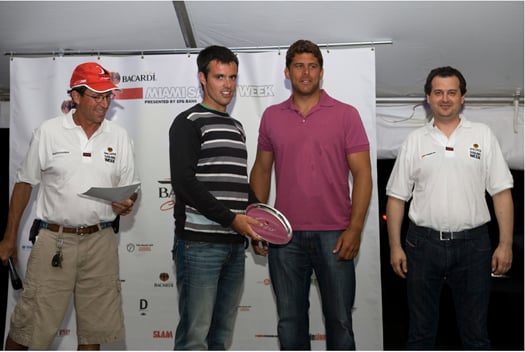
Peter O'Leary and David Burrows (centre) receive the Bacardi Cup second place salver in Miami yesterday. Photo: Courtesy Bacardi Cup/Star Class
Their final score after six races that began on Monday was 24 — only one point behind the French duo.
In a consistent display of speed and tactical ability against a big international fleet only Ireland posted the most consistent scores of the series with all results in the top ten.
Racing in the event was cut short due to thunderstorms on Thursday.
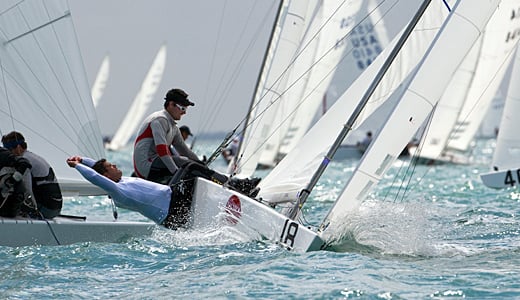
Peter O'Leary with crew David Burrows at full stretch at the weather mark. Photo courtesy Bacardi Cup
O'Leary and Burrows recorded single-digit finishes over the course of the regatta; they finished with an 8-4 on the penultimate day to move from fourth overall into the lead of the 89-boat fleet with 18 points only to lose out in the final race.
Full Results HERE.
Star Class website/results/comment HERE
Photos of O'Leary and Burrows in action on our gallery HERE
Podcast interview and Career highlights of Peter O'Leary HERE































